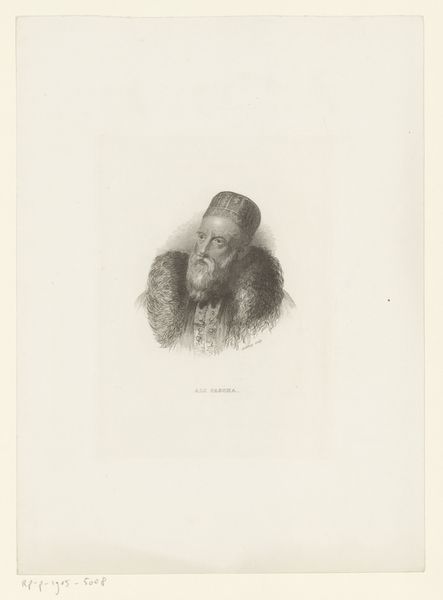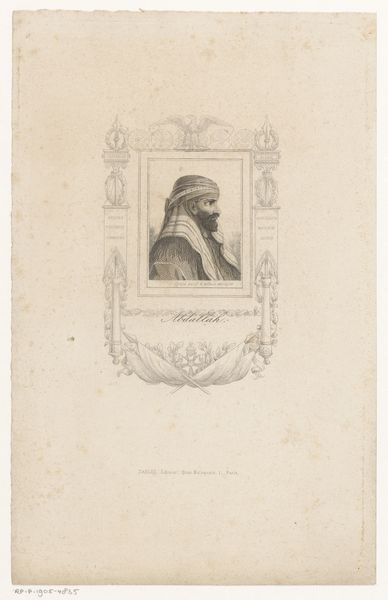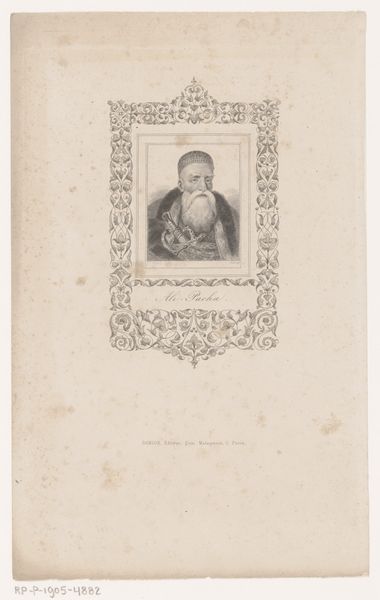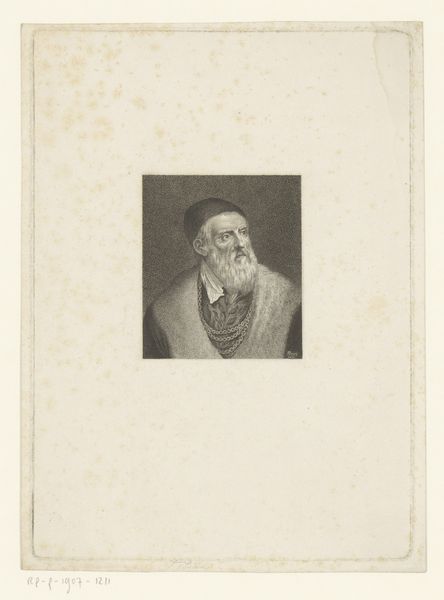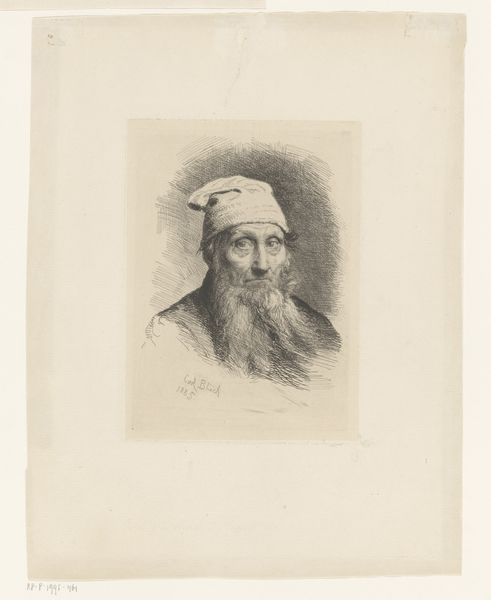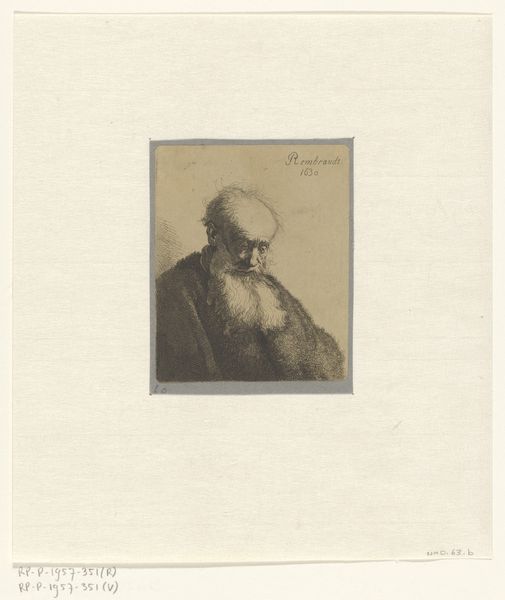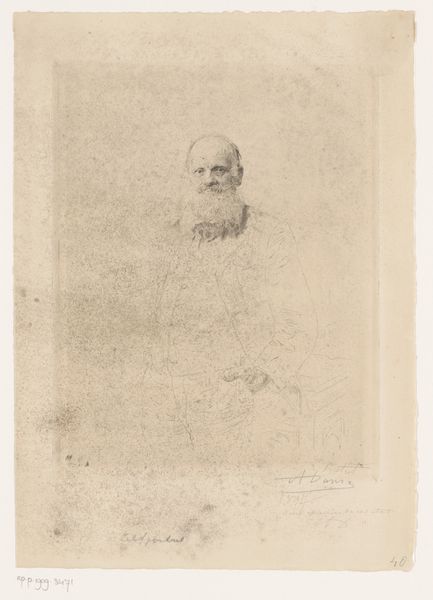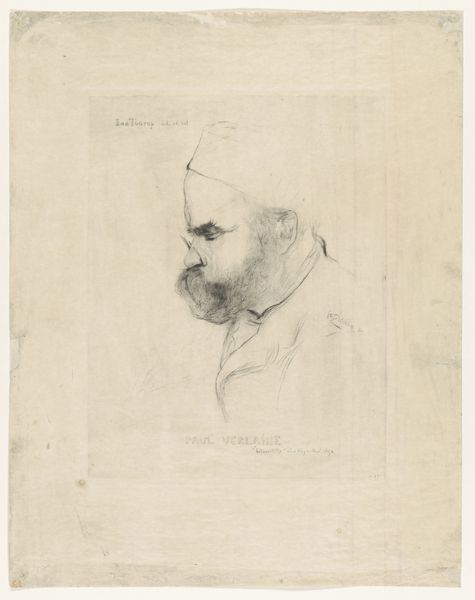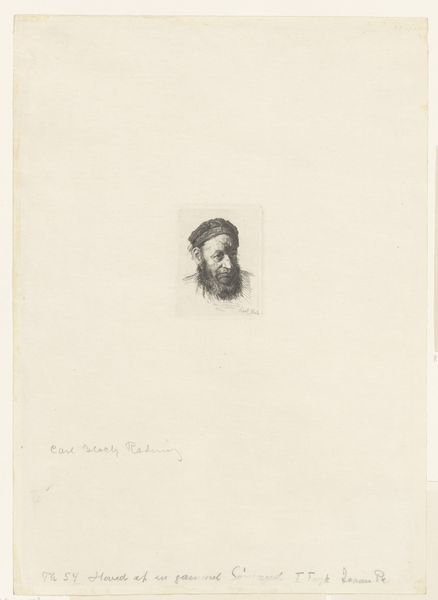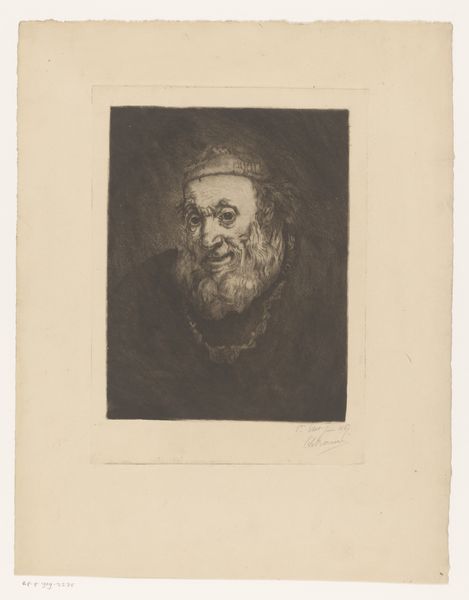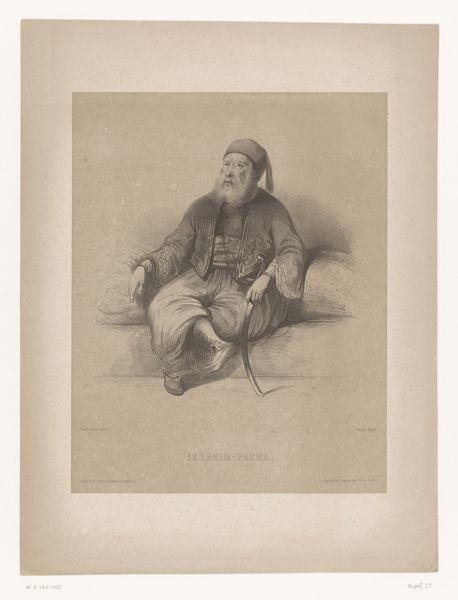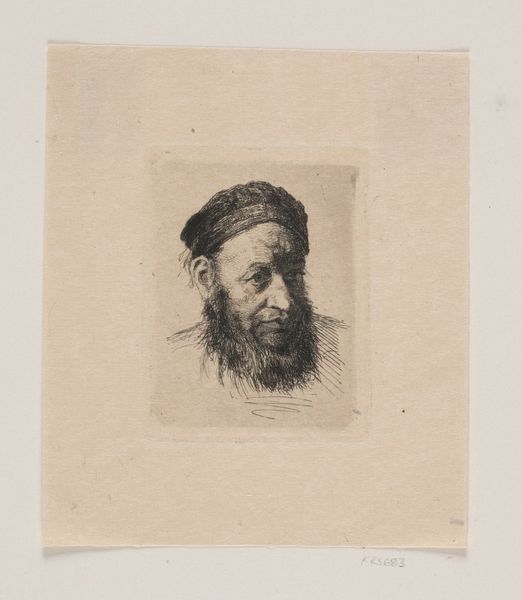
drawing, pencil
#
portrait
#
pencil drawn
#
drawing
#
pencil drawing
#
pencil
#
pencil work
#
academic-art
#
realism
Dimensions: height 165 mm, width 120 mm
Copyright: Rijks Museum: Open Domain
Curator: Looking at this, I’m struck by the immediacy and vulnerability in this drawing of Ali Pasha by Lazarus Gottlieb Sichling, sometime between 1822 and 1863. It feels unfinished, but perhaps that’s part of its power. Editor: The very material of the drawing itself – the graphite, the paper – whispers of accessibility. Pencil democratizes portraiture in a way oil paint never could. This wasn't some lavish commission for a palace, but something more immediate and perhaps even personal. Curator: I see it too. The artist uses pencil to capture Ali Pasha's gaze. To me, the fur collar suggests status and power, but then, what’s the significance of him looking slightly to the right with a melancholy in his eyes? Editor: It’s interesting that you mention the fur collar, to me, it is evidence of both wealth and access to materials traded or pillaged. This era sees increasing resource extraction across what we now think of as “the Middle East,” and fashion played a key role, connecting colonial enterprise and commodity culture. And note, by the way, the pencil allows for incredibly precise detailing in capturing the textures and layering within it. Curator: Absolutely. Considering that fur and its complex historical meanings, perhaps its role is symbolic. It feels very much of its time, connecting with the Western fascination of Orientalism, almost exoticizing. Does it not echo through our memories how those in power project themselves through symbols of status, class and race? Editor: That's an astute observation. The "Orientalism" that we find in this image, through details like his turban and even the script under his name, wasn't just about fashion or decoration. It was tied into larger processes of economic exchange and political influence. How are we looking at this portrait? Is it from a place of admiration, fetishization, or even justification of certain inequalities that continue today? Curator: It feels like we are left to navigate an entire spectrum of historical context within one relatively small drawing! I come away more fascinated by what portraits reveal beyond the surface. Editor: Agreed, the nuances of artistic materiality alongside the historical conditions in which the artwork was created add unexpected layers of insight that ask urgent questions today.
Comments
No comments
Be the first to comment and join the conversation on the ultimate creative platform.
